Released in late-2005, Fujitsu continued their ongoing presence in the 2.5″ enterprise market with the MAY2073RC and lower capacity MAY2036RC. While Fujitsu’s offerings for the enterprise space are scarcely covered, they do show some interesting things of note in an era where the company no longer produced standard 3.5″ consumer models.
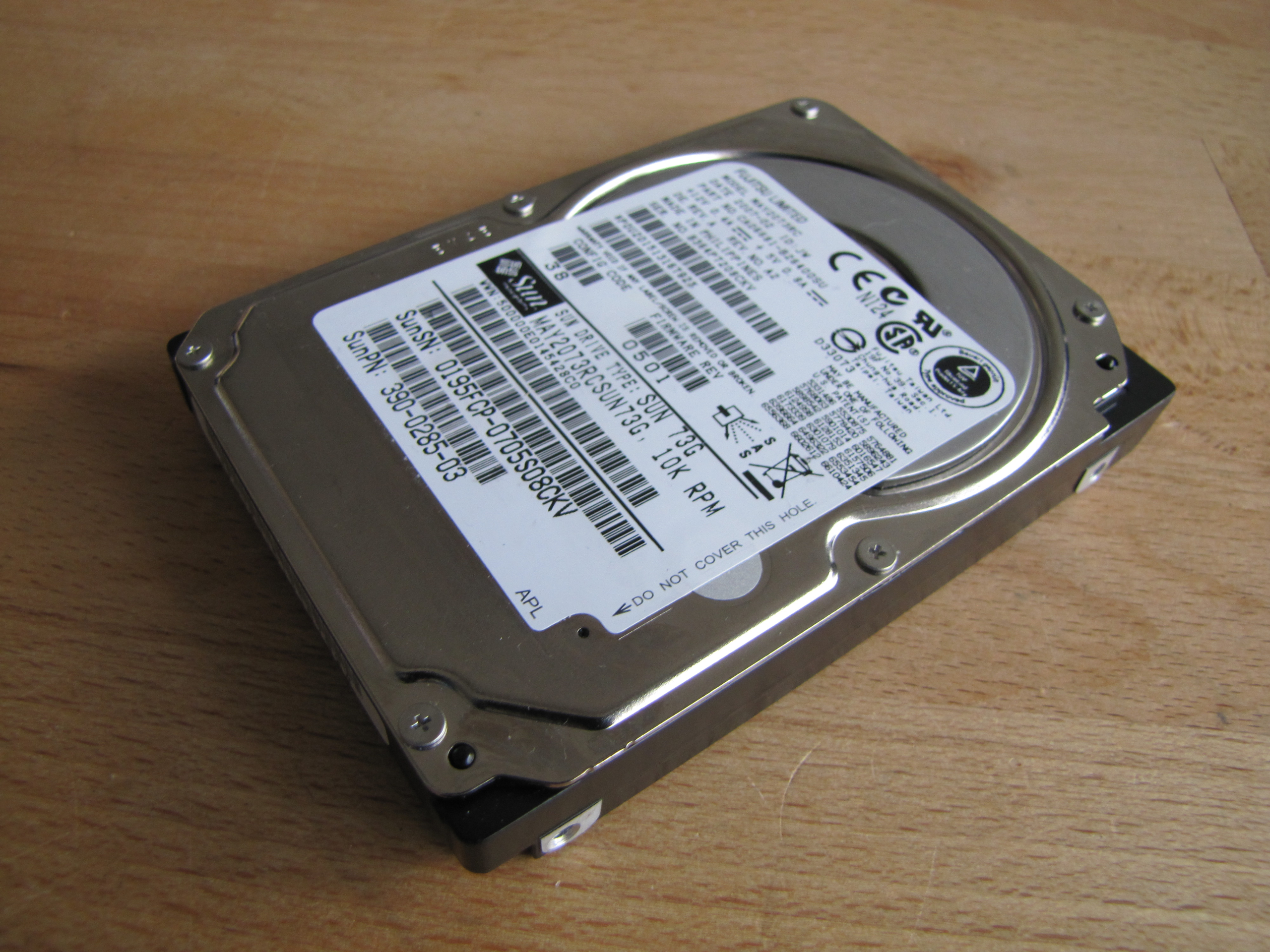
Drive Attributes ------------------------------------- Fujitsu MAY2073RC ------------------------------------- Capacity 73.5GB Mfc Date 2007-02 Format 2.5" Height 15mm Interface SAS Platters 2 Heads 4 Cache 16MB RPM 10000 Protocol SAS-1/300 Origin Philippines (FCPP) -------------------------------------
A top of the line enterprise model may seem a bit pathetic coming in at 15mm in height with only two platters, but running at 10k RPM certainly has its own challenges. This drive utilises the first version of Serial-Attached SCSI (SAS), so a 300MB/s transfer link is all it’ll manage.
With two platters, each surface has a density of roughly 18.375GB with a total disk density of 36.75GB. It’s no surprise that the lower-end model with the MAY2036RC is only listed as a 36.7GB unit.
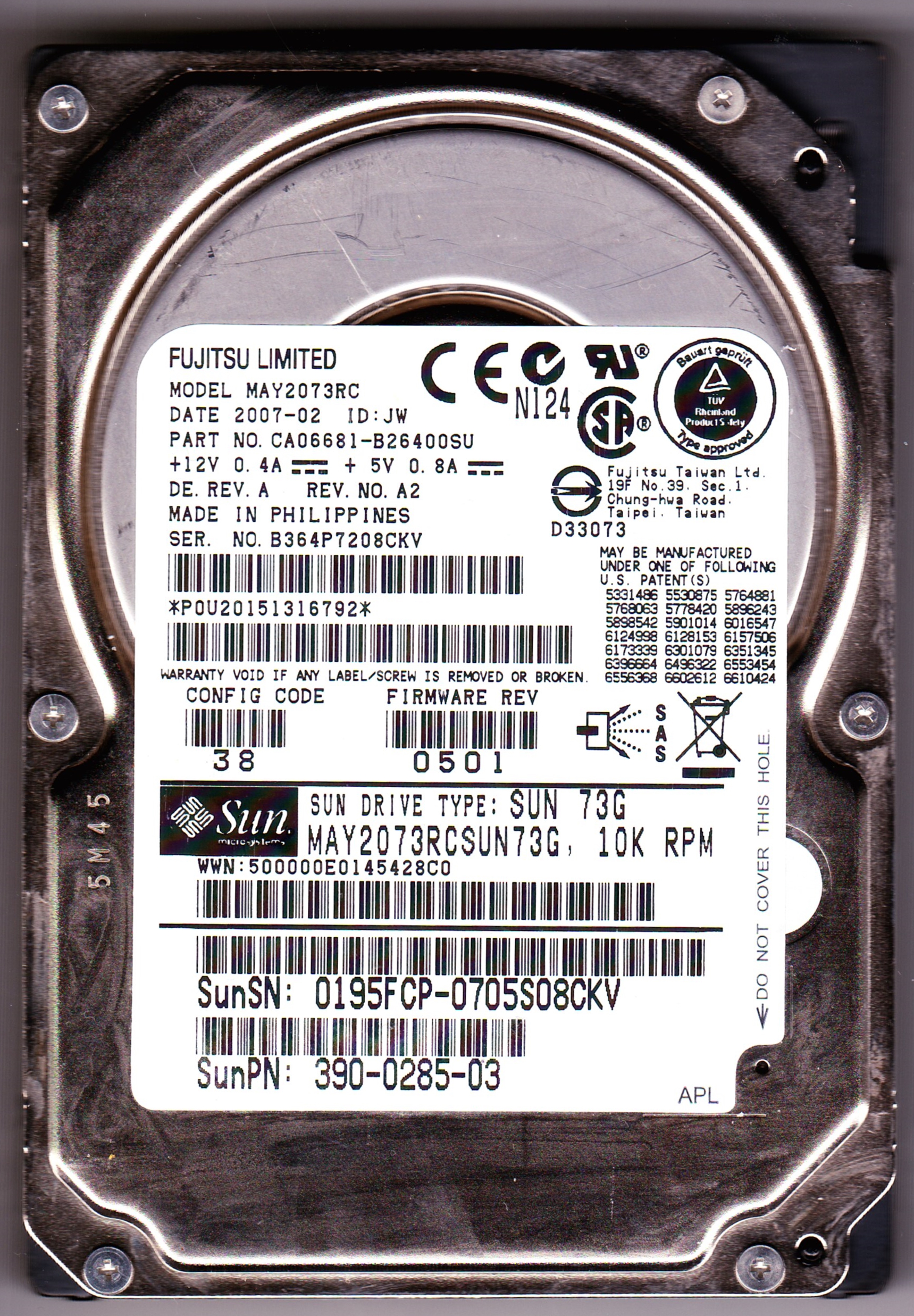
Whilst the detailed origins of this particular example are unknown, being salvaged from a discarded Sun Microsystems caddy, it’s clear which sort of environment this one was held in. Fujitsu’s label design was long enforced by this point, being clear and simple, whilst holding most useful data. An RPM figure would be appreciated, but fortunately the OEM label gives this away.
This drive was produced in the Philippines, in the usual FCPP (Fujitsu Computer Products Corporation of the Philippines) factory. Being a factory used for the brunt of Fujitsu’s enterprise-grade models going forwards, many other 2.5″ models would continue to be produced here. This continued after Toshiba’s acquisition of the division, where Fujitsu’s past 2.5″ enterprise designs continue to be developed-upon.
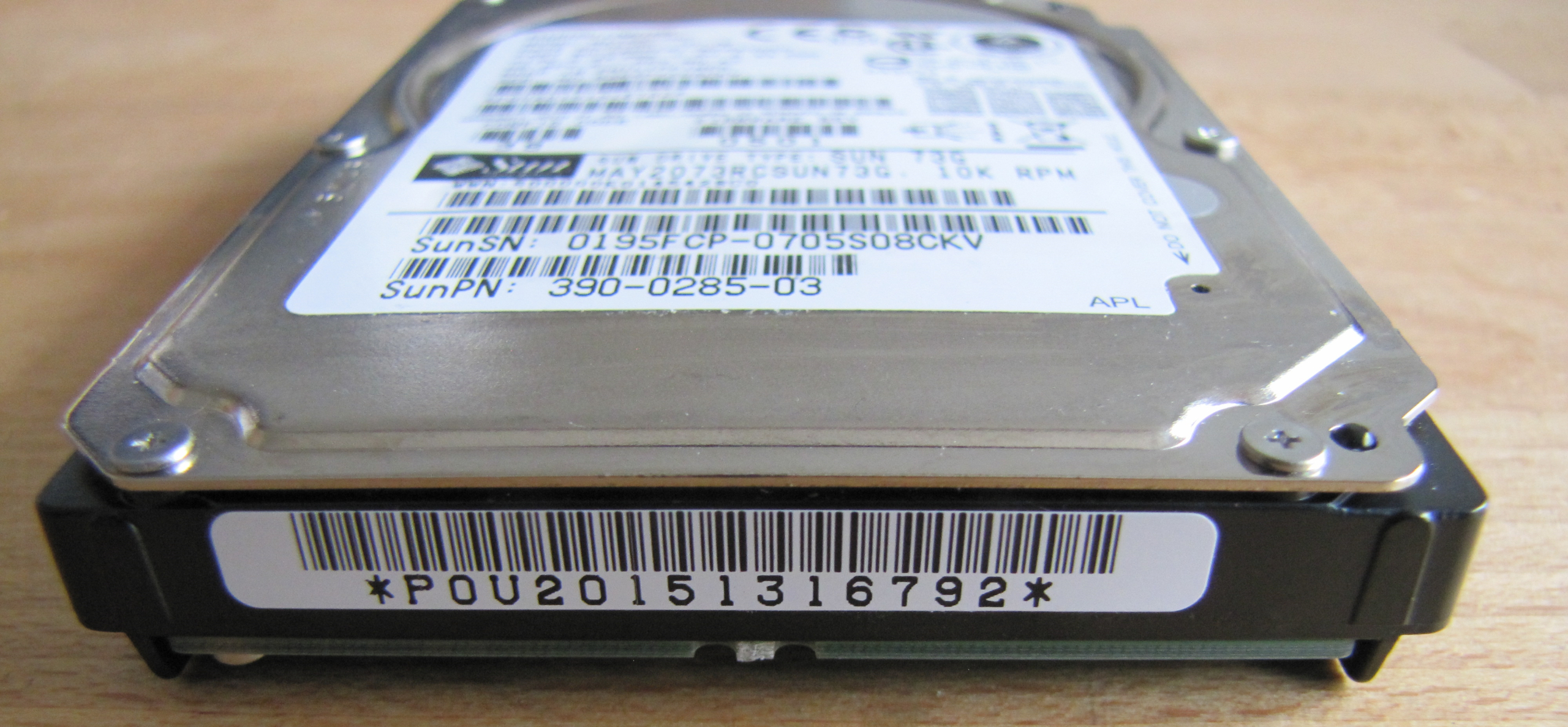
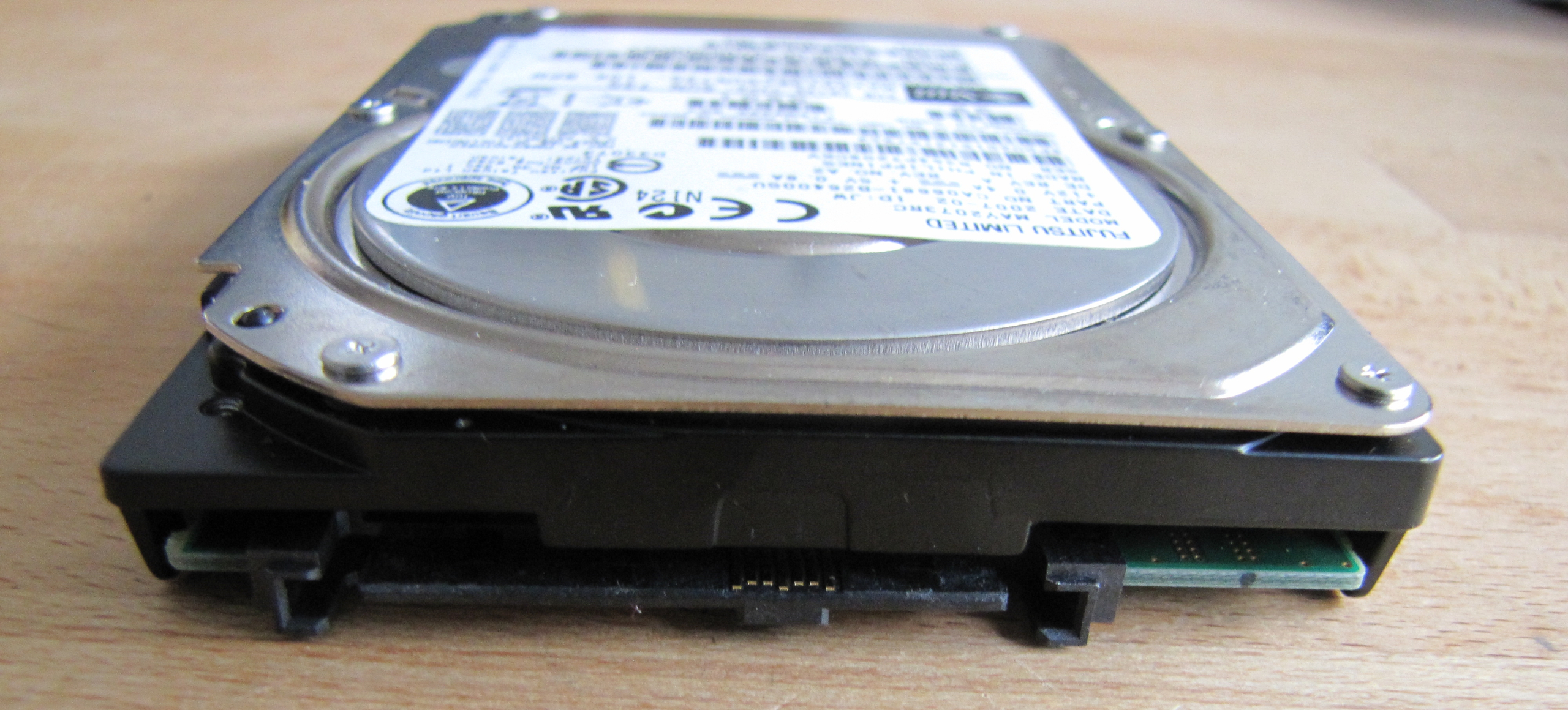
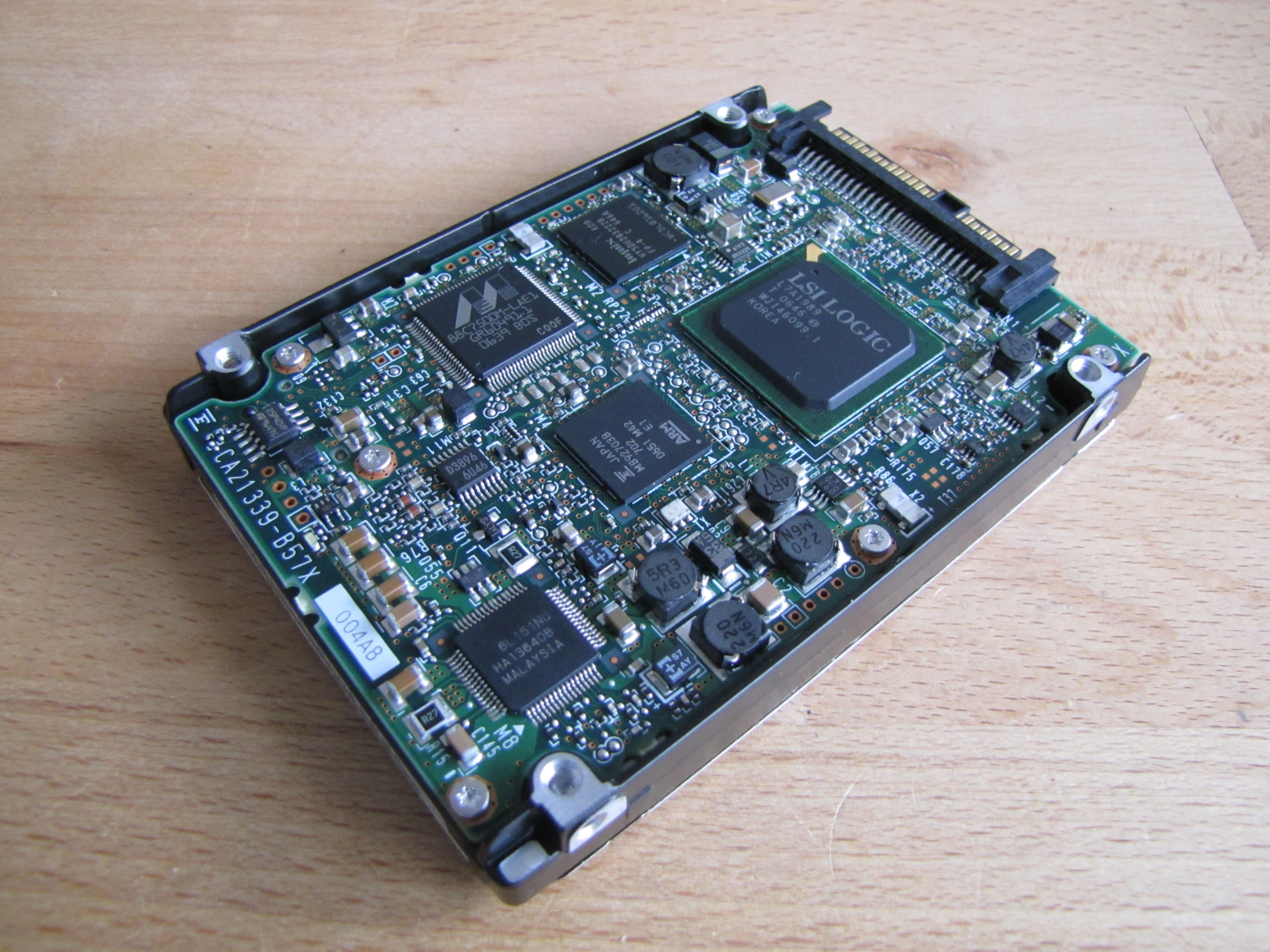
Being enterprise-grade, components face outwards rather than inwards. For most drives within SAS-level history, with IC’s generating more heat than with a standard consumer unit, retaining a non-optimal process when concerning potential component damage as a result of mishandling isn’t the largest of concerns. After all, individuals installing these drives are (for the most part) more trained than the average consumer. Nonetheless, in the coming decade, most SAS models would eventually also flip board layouts for the same reasons as was done on standard consumer boards.
Looking below at the PCB in more detail reveals a complex array of logic & circuitry.

The microcontroller on this drive is an ARM-based chip, with some design elements by Fujitsu (part MB92703B). It’s a 16-bit microcontroller utilising a single F2MC-16LX core, alongside an internal 256KB, 384KB or 512KB ROM and up to 30KB of RAM. A neat little chip, that’s for sure.
Continuing onwards, the SAS interface adapter is provided by LSI (part L7A1989), allowing for a maximum speed of a blistering 300MB/s (of which this drive will never come close to alone). 16MB of cache is provided by Hynix (now SK Hynix, part HY50U283222B).
The 88C7500M-LAE1 IC from Marvell is another special one, being an integrated peripheral controller alongside the primary microcontroller listed above. The final major IC is a Hitachi unit, with the only notation of such being in the model number starting with “HA”, which is simply the spindle motor controller. (part HA13640B)
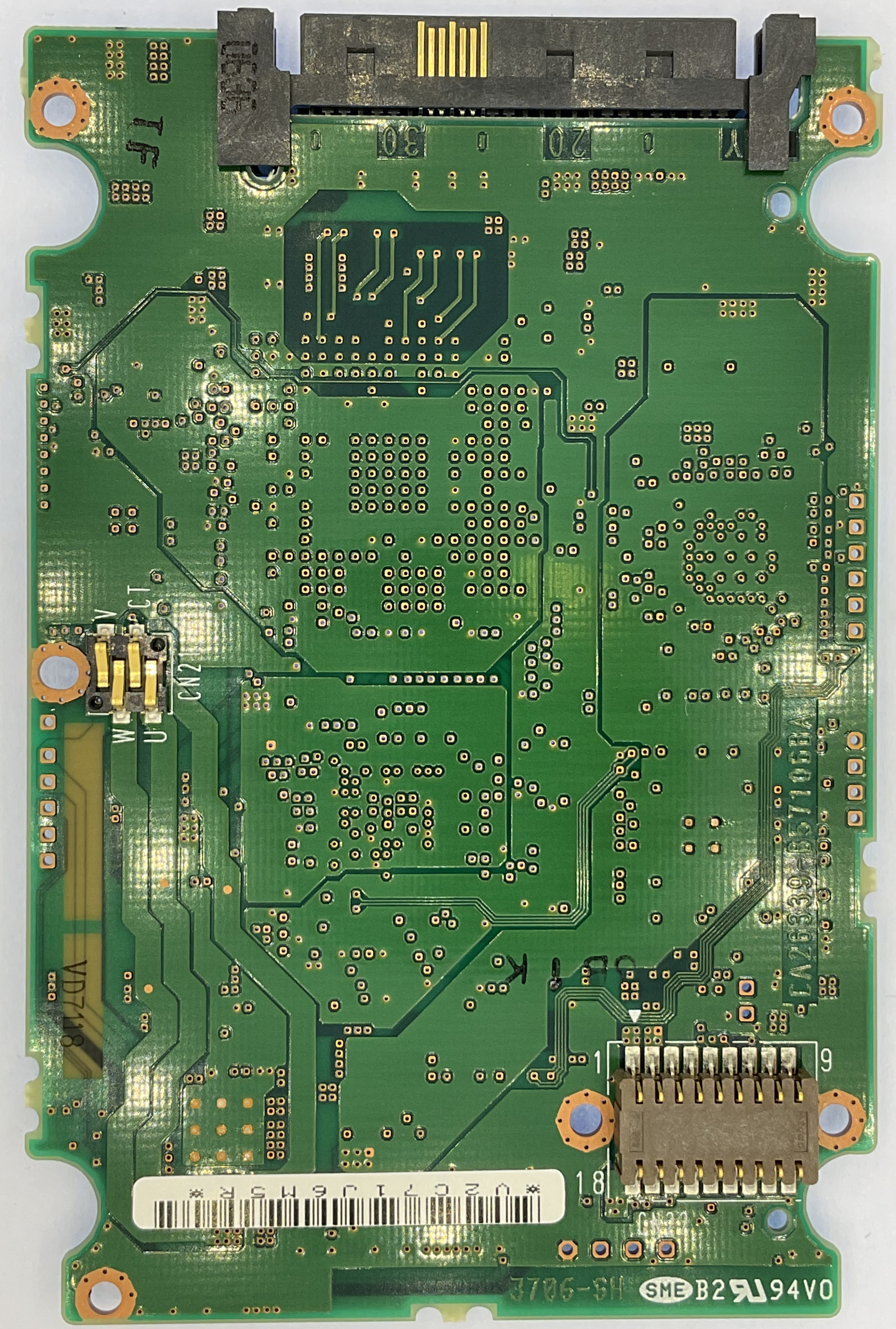
The rear side of a PCB usually isn’t all that interesting, but a drive in more uncharted territory reveals some interesting elements in the end. Tracing the spindle-motor connector to the controller itself doesn’t take much work, making it blatantly obvious from this side. The head-stack connector is rather tall, really pushing this form factor to its limits.
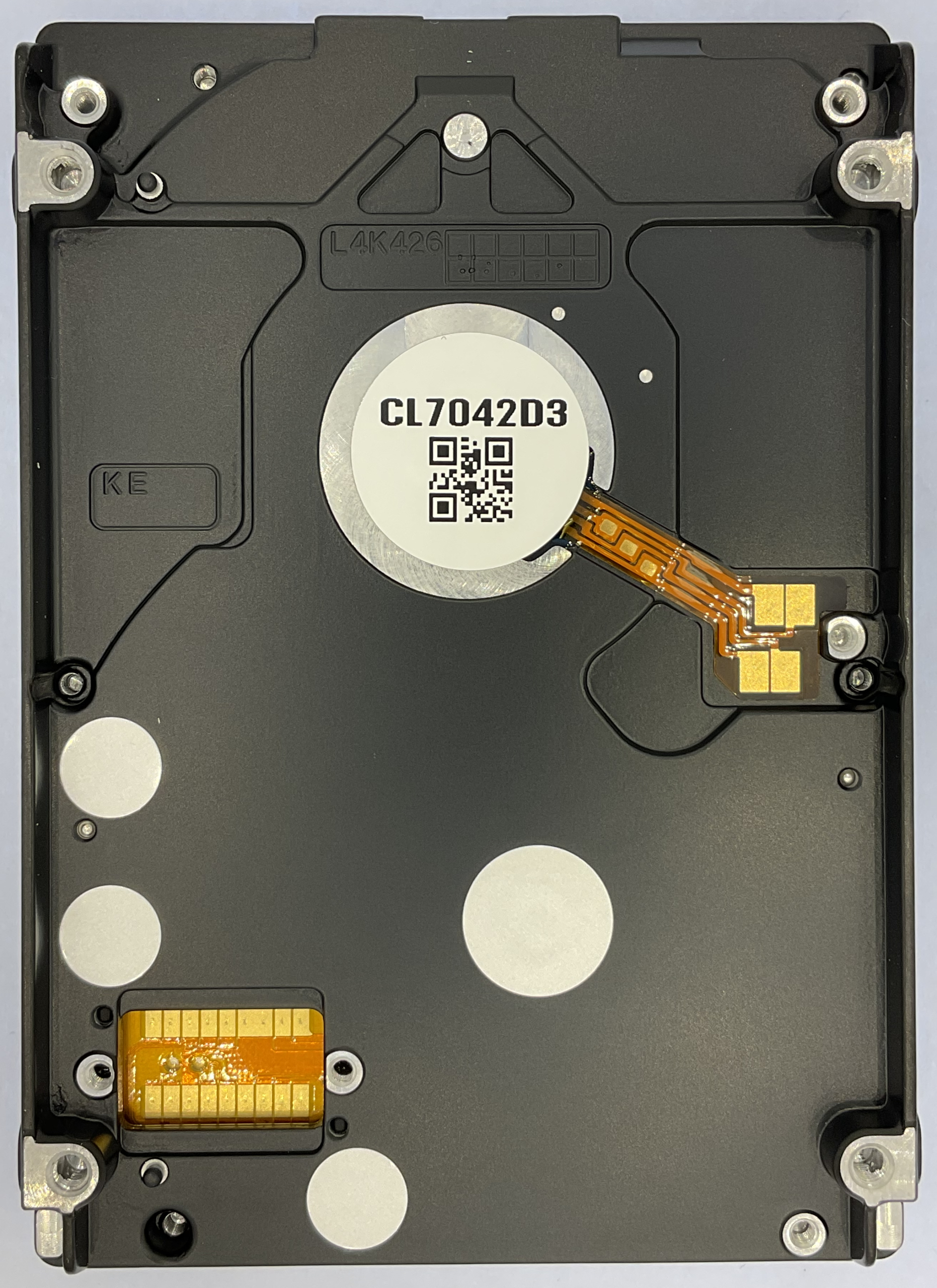
Looking underneath the PCB reveals how close the head-stack connection point is to the top-plate of the drive. The spindle-motor is unbranded, so more details cannot be found, unfortunately.
Aside from some insulation material between the board and the underside (removed from the photo above), there’s not all that much to speak of on this side.

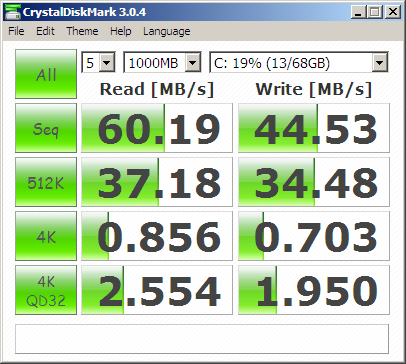
10,000 RPM certainly offers advantages comparatively, alongside performance being the main aim of a drive of this calibre. While it may seem paltry in the current era, these drives certainly weren’t bad for their initial release period.
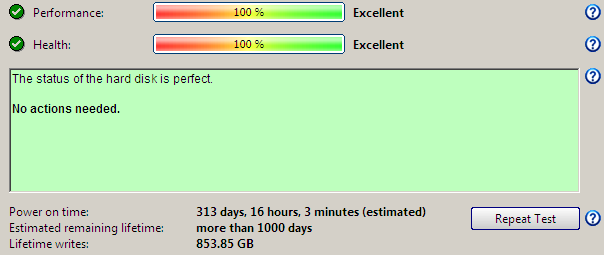
Health metrics for SAS drives are much more convoluted, as compared to simply checking SMART data on a SATA unit. Complexity aside, viewing attributes via Hard Disk Sentinel isn’t a challenge, demonstrating that this drive is in perfect health. With almost 8k hours on the clock, this unit is an exceptionally young example, from an environment usually expecting at least 3 years of constant run-time.
If you’re curious to see the full health metrics available for this drive, feel free to check the report generated by HD Sentinel below:
Fujitsu MAY2073RC – Disk Health Report (.html, opens in new tab)
Fujitsu’s efforts in the enterprise space will continue to be a fascinating thing to cover, particularly given their more obscure nature as a result of being non-consumer standard (previously being quite expensive too, as one would expect). While this drive offers little when concerning applicable use-cases in the current day, it remains a fun drive in specific testing scenarios.
Fujitsu MAY2073RC Product Overview (.pdf)